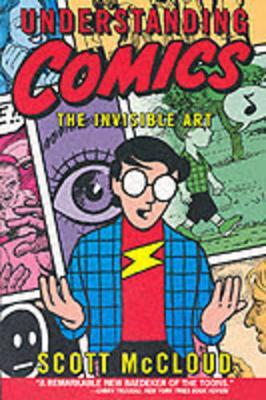Reviewed by Michael @ Knowledge Lost on
Now that I have had a little rant about art, let’s talk about comics and Understanding Comics by Scott McCloud. This book is a graphical look into comics as an art form, exploring the history of comics and tries to explain the meaning behind the art. It starts off trying to define what a comic is, which I quickly realised was an impossible feat. McCloud ended saying “Comics are juxtaposed pictorial and other images in a deliberate sequence, intended to convey information and/or produce an aesthetic response in the viewer” but then went on to explain how problematic that definition can be.
A highlight for me was found in chapter two where Scott McCloud explored the vocabulary of comics. The chapter begins with explain René Magritte’s painting The Treachery of Images (1928-29), an artist I am a big fan of. I actually went to the Los Angeles County Museum of Art in the hope to see The Treachery of Images, but it was currently on loan to the Art Institute of Chicago. What I liked about this chapter was how he took the meaning of this painting and expanded on it to help explain comics. He took something easy to explain and built upon that to the more complex ideas.
Reading Understanding Comics makes comics sound like highbrow pieces of art and maybe that is how we should view them. Instead of thinking about comics as a lowbrow medium, it is about time we experience the art and what it can tell us. In this book six major ideas around the art. Idea/purpose, form, idiom/style, structure, craft and surface; explaining how they can all work together to make great pieces.
There is a lot of information within Understanding Comics and I don’t think I have explored it all yet. It has equipped me with some new tools when reading and reviewing comics. The best thing about this book is the way Scott McCloud changes his art style and methods to explore the different ways you can execute the theories behind this book. I am glad he referenced all his work, especially when talking about other artists and how they write comics. The graphical representation of the art theory in the book helped me to understand comics a little better but there is just so much here that I will need to reread this a few times before it sinks in.
This review originally appeared on my blog: http://literary-exploration.com/2014/10/29/understanding-comics-by-scott-mccloud/
Reading updates
- Started reading
- 29 September, 2014: Finished reading
- 29 September, 2014: Reviewed
